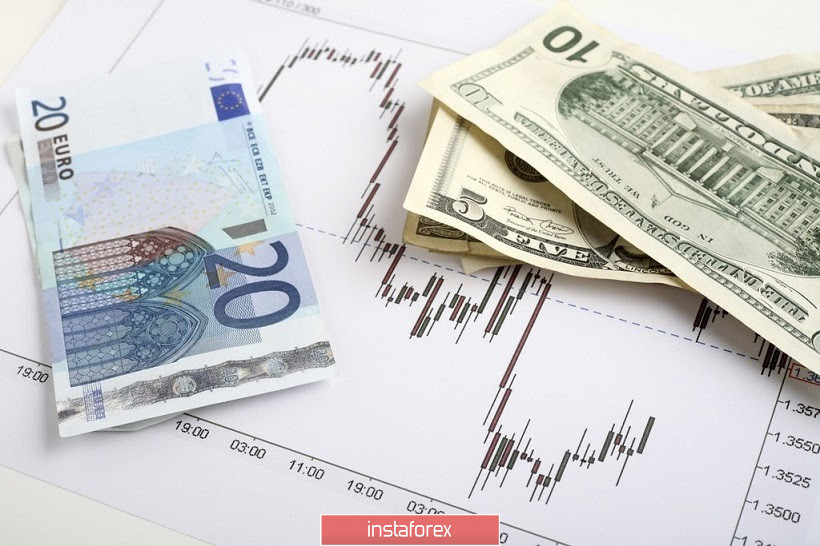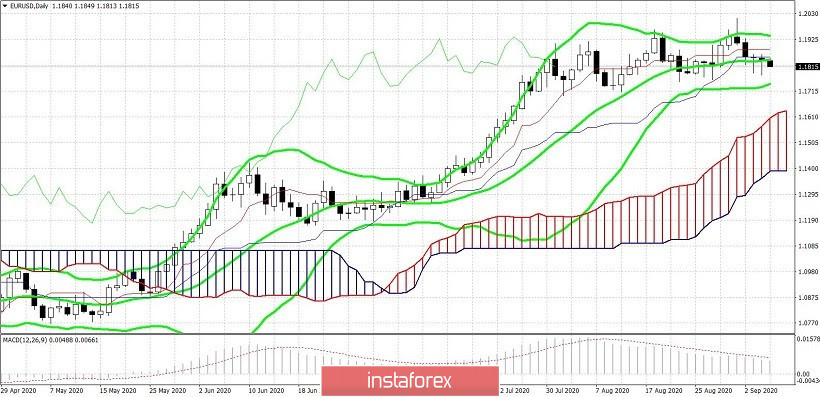The euro-dollar pair is staying within the 18th figure, although the pair's sentiment remains bearish. The price is slowly falling sliding towards the intermediate support level of 1.1800, under pressure from secondary or indirect fundamental factors. On the whole, Monday turned out to be a trading day in passing, since the macroeconomic calendar was practically empty during the European session, and was completely empty in the US session. It is an official holiday in connection with the celebration of Labor Day in Canada and the United States, so the trading floors of these countries are closed. By and large, the current trading week will begin in full on Tuesday, while today almost all major pairs are flat in a narrow range of price ranges - except for the pound-dollar pair, which has been hit due to pessimistic news related to the prospects for Brexit.

However, the Brexit issue affected the positions of the euro-dollar pair. Let me remind you that since the beginning of the year, London and Brussels have been holding difficult talks on further relations. Neither side is willing to make concessions, while the transition period ends in January 2021. If the negotiating groups do not come to a compromise, the WTO rules will apply starting next year, which are disadvantageous to both British and European entrepreneurs. Another round of negotiations will begin tomorrow, September 8, which may be the last.
Thus, British Prime Minister Boris Johnson set a deadline yesterday: if the parties do not reach a compromise by December 15, the UK will refuse further dialogue and will prepare for trade relations without a deal. At the same time, he ruled out the option of extending the transition period (while the Europeans are not against such a development of events). Earlier statements by EU and British representatives indicate that the next talks will end in failure. Brussels accuses London of intransigence, London, in turn, accuses Brussels of imposing legislative and regulatory frameworks. Against the backdrop of such pessimistic prospects, The pound has fallen in price across the entire market today. Following it, the euro left (except for the EUR/GBP cross pair), since the absence of a deal will negatively affect the European economy, especially amid the coronavirus crisis.
Today's macroeconomic reports also left much to be desired. And although minor data were published, they added to the negative fundamental picture for the single currency. The volume of industrial production in Germany in July grew by only 1.2%, while experts expected to see this figure much higher, at around 4.5%. At the same time, the indicator showed positive dynamics in May and June (7.4% and 9.3%, respectively).
Traders of the EUR/USD pair drew attention to another indicator - the Sentix investor confidence index. It is a leading indicator of economic health based on a survey of investors and analysts. Iit has been below zero for seven months, that is, since March of this year, but has been consistently recovering after reaching a historical anti-record of -42.9 points (April low, at the height of the coronavirus crisis). Contrary to positive forecasts, the indicator remained in the negative area in September, at around -8 points, mainly due to growing pessimism regarding the European economy's recovery.
On the one hand, these are secondary macroeconomic reports, the impact of which is limited. On the other hand, amid the US holiday and, consequently, low liquidity, the pair reacted to such fundamental factors.
The macroeconomic calendar is not eventful tomorrow. The final estimate of the eurozone GDP growth for the second quarter will be published during the European session. But according to general forecasts, the final assessment will coincide with the original, so this release will not cause any excitement.

In general, the EUR/USD pair is in anticipation of this week's main events. Firstly, the September European Central Bank meeting (which will take place on Thursday); secondly, the publication of key data on the growth of US inflation (the release is scheduled for Friday). The pair will most likely trade in the range of 1.1730-1.1880 (the lower Bollinger Bands line on D1 and the Tenkan-sen line on the same timeframe) in the next few days. Market participants are unlikely to risk leaving the mentioned range due to the importance of upcoming events. For example, if the ECB repeats the rhetoric of the chief economist of the central bank Philip Lane regarding the high euro rate, the EUR/USD pair may tumble to the bottom of the 17th figure and even to the support level of 1.1650 (the upper limit of the Kumo cloud). But if the ECB refrains from such rhetoric, and US inflation turns out worse than expected, then the pair may surge to the border of the 19th figure and even to the resistance level of 1.1930. Due to this uncertainty, traders are not yet at risk of opening large positions. Nevertheless, within the above range, from current positions, you can consider short with the main target at 1.1730 and with a stop loss at 1.1880.





















